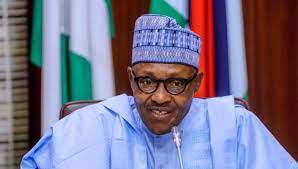President Muhammadu Buhari on Wednesday unveiled Nigeria’s National Development Plan 2021-2025 following the conclusion of the implementation of the nation’s Economic Recovery and Growth Plan (ERGP 2017-2020).
The President made the National Development Plan 2021-2025 presentation shortly before the kick off of the virtual the Federal Executive Council (FEC) meeting held in the Presidential Villa, Abuja.
Speaking on the economic development roadmap document, the Minister of Finance, Budget, and National Planning, Dr Zainab Ahmed, explained that the new Plan replaced the ERGP 2017-2020.
She clarified: “The NDP 2021-2025 is designed as our medium-term Development Plan to succeed the Economic Recovery and Growth Plan (ERGP 2017-2020), which ended in December 2020.
“The ERGP 2017–2020 assisted the country to exit economic recession in 2017 and sustained modest growth until the recent global economic challenges occasioned by COVID-19 Pandemic. The current challenges are products of many years of inappropriate policies, fiscal leakages, and global economic phenomena.
“This Administration is taking necessary actions that will fundamentally change the structure of the economy and how government businesses are conducted for efficiency and effectiveness”, the minister added.
She expressed optimism that the plan would help Nigeria achieve development in the critical sectors of the nation’s economy, particularly the Science and Technology sector.
Ahmed explained that the President granted approval to the Ministry of Finance, Budget and National Planning in 2019 to develop a new national development plan to succeed both ERGP 2017-2020.
According to her, the new National Development Plan 2021-2025 is a pointer to the type of Nigeria the citizens desire as it encourages the use of science, technology and innovation to drive growth.
The minister expatiated: “In order to have the future we all desire, the Plan is developed to play a sizable role in the product complexity space internationally and adopts measures to easing constraints that have hindered the economy from attaining its potentials, particularly, on the product mapping space.
“The Plan provides for the implementation of major infrastructure and other development projects across the six Geo-political Zones and the opening up of opportunities for the rural areas to ensure balanced development and increased competitiveness”, Ahmed added.






